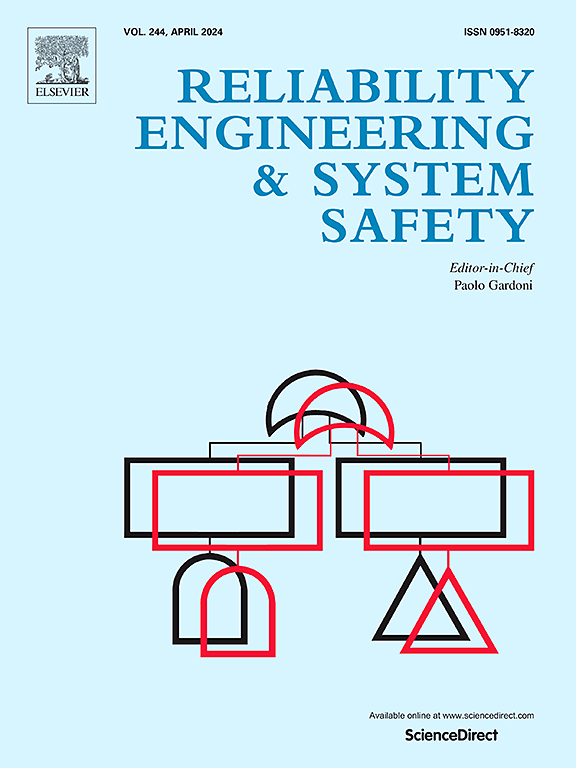A transfer learning approach for remaining useful life prediction subject to hard failure considering within and between population variations
IF 9.4
1区 工程技术
Q1 ENGINEERING, INDUSTRIAL
引用次数: 0
Abstract
Accurate prediction of remaining useful life (RUL) of a unit plays a critical role in condition-based maintenance, especially for hard failure cases. In industrial practice, due to differences in units’ types and working environments, there may exist multiple populations, and even within the same population, there are also variations among units. However, existing methods either assume that different units share the same population characteristics and ignore the between-population variations, or solely focus on between-population knowledge transfer while neglecting the within-population variations. To address this issue, this article proposes a transfer learning approach by integrating a Cox Proportional Hazards (PH) model with a Bayesian hierarchical model, which considers both within and between population variations. Specifically, a shared prior distribution is deployed to the parameters of the Cox model in each population, which builds the foundation for transfer learning across different populations. To model within-population variations, a linear mixed-effects model is utilized to represent heterogeneous degradation data of each unit. The effectiveness of the proposed method is demonstrated and compared with various benchmarks through a simulation study and a case study of turbine engines.
考虑种群内部和种群之间变化的硬失效下剩余使用寿命预测的迁移学习方法
准确预测机组的剩余使用寿命(RUL)在基于状态的维修中起着至关重要的作用,特别是在硬故障情况下。在工业实践中,由于单位类型和工作环境的不同,可能存在多个种群,即使在同一种群内,单位之间也存在差异。然而,现有的方法要么假设不同单位具有相同的种群特征,而忽略了种群间的变化,要么只关注种群间的知识转移,而忽略了种群内的变化。为了解决这个问题,本文提出了一种迁移学习方法,通过将Cox比例风险(PH)模型与贝叶斯分层模型相结合,该模型考虑了种群内部和种群之间的变化。具体来说,在每个种群中对Cox模型的参数进行了共享先验分布,这为跨不同种群的迁移学习奠定了基础。为了模拟种群内的变化,采用线性混合效应模型来表示每个单元的异质性退化数据。通过仿真研究和涡轮发动机实例,验证了该方法的有效性,并与各种基准进行了比较。
本文章由计算机程序翻译,如有差异,请以英文原文为准。
求助全文
约1分钟内获得全文
求助全文
来源期刊

Reliability Engineering & System Safety
管理科学-工程:工业
CiteScore
15.20
自引率
39.50%
发文量
621
审稿时长
67 days
期刊介绍:
Elsevier publishes Reliability Engineering & System Safety in association with the European Safety and Reliability Association and the Safety Engineering and Risk Analysis Division. The international journal is devoted to developing and applying methods to enhance the safety and reliability of complex technological systems, like nuclear power plants, chemical plants, hazardous waste facilities, space systems, offshore and maritime systems, transportation systems, constructed infrastructure, and manufacturing plants. The journal normally publishes only articles that involve the analysis of substantive problems related to the reliability of complex systems or present techniques and/or theoretical results that have a discernable relationship to the solution of such problems. An important aim is to balance academic material and practical applications.
 求助内容:
求助内容: 应助结果提醒方式:
应助结果提醒方式:


